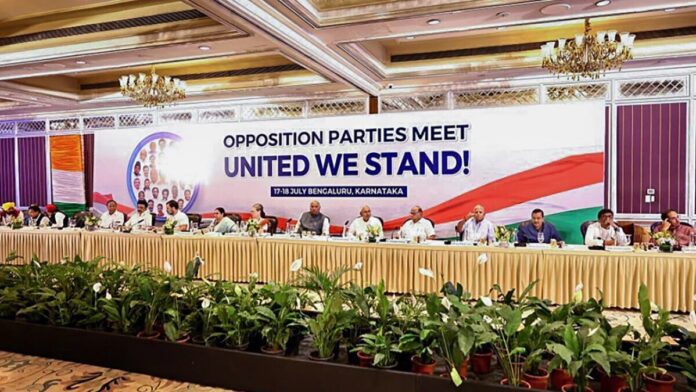While the India Alliance holds great promise, it also faces numerous challenges that must be addressed to realize its full potential
Amit Kumar
The political landscape of India has witnessed a significant shift with the emergence of the India Alliance, a coalition of opposition parties aimed at challenging the dominance of the ruling Bharatiya Janata Party (BJP) and its leader, Prime Minister Narendra Modi. Comprising leaders from 28 major opposition parties across the country, the India Alliance represents a concerted effort to forge a new political alternative and provide the electorate with a viable option in the upcoming Lok Sabha elections.
The formation of the India Alliance marks a watershed moment in Indian politics, characterized by a departure from traditional party politics and the consolidation of diverse political forces. Led by leaders such as Sonia Gandhi, Rahul Gandhi, Mamata Banerjee, Sharad Pawar, and others, the alliance brings together parties with varying ideological leanings, from the Indian National Congress to regional outfits like the Trinamool Congress, Nationalist Congress Party, and others.
The primary objective of the India Alliance is to present a united front against the BJP-led National Democratic Alliance (NDA) and offer the electorate a credible alternative to the current ruling dispensation. With the BJP’s continued dominance in national politics over the past decade, the formation of a cohesive opposition alliance has become imperative to counterbalance its hegemony and ensure a more pluralistic and democratic political environment.
While the India Alliance holds great promise, it also faces numerous challenges that must be addressed to realize its full potential. One such challenge is the issue of seat-sharing among alliance partners, which has led to tensions and disagreements within the coalition. The absence of a formal agreement on seat allocation has given rise to speculation and uncertainty, threatening the unity and cohesion of the alliance.
Moreover, the lack of a designated coordinator for the India Alliance has further complicated matters, as coordination and decision-making become more challenging in the absence of a centralized leadership structure. To overcome these challenges, alliance leaders must prioritize dialogue and consensus-building, ensuring that the interests of all parties are adequately represented in the decision-making process.
Another challenge facing the India Alliance is the need to effectively mobilize support at the grassroots level and convey its message to the electorate. While the alliance boasts considerable political firepower in terms of leadership and resources, it must translate this into tangible gains on the ground by reaching out to voters across the country and articulating a compelling vision for the future.
In this regard, the India Alliance has a unique opportunity to leverage the growing discontent among sections of the electorate with the BJP government’s policies and governance record. Issues such as unemployment, agrarian distress, economic inequality, and social polarization have fueled widespread dissatisfaction with the ruling dispensation, providing fertile ground for opposition parties to make inroads.
The India Alliance must expeditiously finalize the allocation of seats among its member parties, taking into account their respective strengths and electoral prospects. By ensuring a fair and equitable distribution of seats, the alliance can minimize internal dissent and present a united front in the upcoming elections.
Effective coordination and communication are essential for the smooth functioning of the India Alliance. A designated coordinator must be appointed to facilitate dialogue and consensus-building among alliance partners, ensuring that decisions are made collectively and transparently.
The India Alliance must focus on grassroots mobilization and outreach to connect with voters at the grassroots level. By engaging with communities, addressing their concerns, and articulating a clear vision for the future, the alliance can garner support and consolidate its electoral base.
The India Alliance must develop a comprehensive policy platform that addresses the pressing issues facing the country, ranging from economic development to social justice and environmental sustainability. By presenting a coherent policy agenda, the alliance can demonstrate its commitment to governance and win the confidence of the electorate.
In addition to consolidating opposition forces, the India Alliance should explore the possibility of forging alliances with like-minded parties and social movements outside its fold. By expanding its coalition base, the alliance can broaden its appeal and present a more formidable challenge to the BJP-led NDA.
The formation of the India Alliance represents a significant development in Indian politics, signaling a shift towards greater unity and cooperation among opposition forces. While the alliance faces numerous challenges, including seat-sharing disagreements and coordination issues, it also presents immense opportunities to challenge the BJP’s dominance and offer a credible alternative to the electorate.
By prioritizing dialogue, consensus-building, and grassroots mobilization, the India Alliance can strengthen its electoral prospects and emerge as a formidable force in the upcoming Lok Sabha elections. As India stands at a crossroads, the success of the alliance will not only shape the country’s political future but also determine the course of its democratic journey for years to come.


